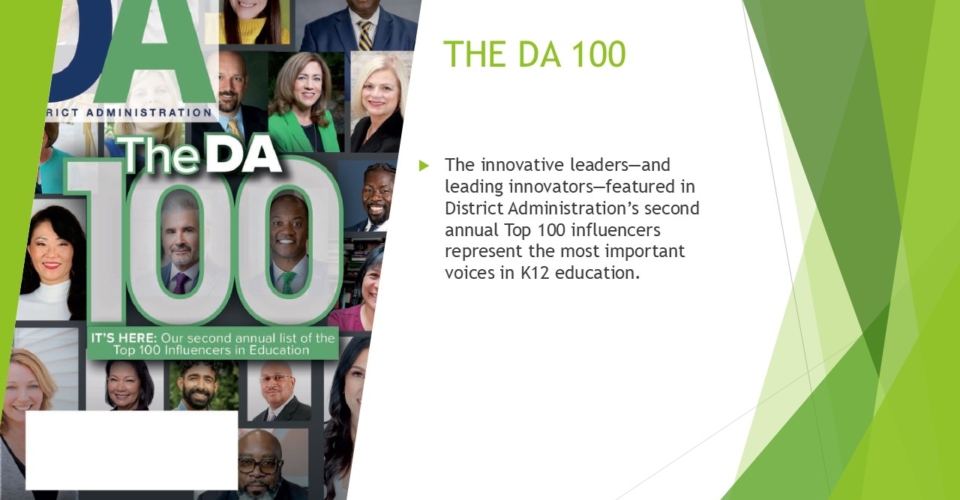Imagine running a business without advertising. No marketing, no outreach, just opening your doors every morning and hoping customers show up. It sounds absurd, yet that’s exactly how many public schools operate.
The result? A system that’s thriving inside the classroom but losing ground outside of it. The narrative has been hijacked.
A loud minority, amplified by social media and political backing, paints schools as broken. Meanwhile, parents walking the halls see something different: dedicated teachers, innovative programs, and students accomplishing amazing things every single day.
So why the disconnect? Education’s successes are invisible, overshadowed by outdated communication strategies that no longer work in today’s attention economy.
A Pew Center Research survey found more than half of U.S. adults (51%) say our public K12 education system is generally going in the wrong direction. A far smaller share (16%) say it’s going in the right direction, and about a third (32%) are not sure.
Public education’s challenges are overshadowing its successes. We cannot keep doing the same outdated communications strategies over and over again and expect different results.
Education isn’t broken. It just needs to market itself like every successful business.
Here are five steps to course-correct your communications:
1. We must shift from reactive to proactive communications. Moving beyond sending press releases and waiting for media coverage, districts need to create (on their own digital channels) compelling stories weekly about student achievement, innovative programs, dedicated educators and the positive impact our schools have on the community.
We have to make it a district-wide priority to tell our school success stories boldly. The local media has little interest in telling your positive news stories. As a former journalist with 22 years of experience, I promise you they prefer the negative news because it gets clicks.
Parents receive an avalanche of communication about the minute details of school.
What they don’t hear nearly enough is why their child should go to your school. While bad news (or rumors) spread like wildfire, Parents want to hear, and more importantly, see, stories showcasing your innovative programming and exclusive learning opportunities.
Educators hate to brag or take credit for their work. That mentality must shift to make the argument that our schools are a family’s best choice.
2. Everyone tells the story! There are many incredible moments and stories that take place in a school building every day. Multiplied across all buildings and all districts, it can’t be one person’s job.
Rather, it’s a shared effort that empowers those who have a front row seat, teachers and staff, to tell the stories that they’ve experienced firsthand. Successful districts recruit district and school staff, as well as high school students from journalism and yearbook classes, to share the storytelling load.
There are communication tools equipped with approval functions to keep safeguards in place as leaders empower their teams. School districts like Michigan’s Saginaw ISD shared more than 5,000 authentic stories, with nearly 300 employee storytellers, through their communication platform.
3. Data-driven messaging. Facts matter. Leveraging data to clearly demonstrate academic growth, program effectiveness and the responsible stewardship of resources can be a powerful storytelling tool for building trust and countering misinformation.
This data should be the substance intertwined with the incredible emotion of your student and staff success stories to create memorable and powerful content. Where are you excelling academically? What is the truth about safety in your schools? Tell your story with outcomes, not adjectives.
4. School districts don’t need more PR spin. They need transparency in all communications. Trust is built through transparency. You have to explain the thought process behind the decision-making.
A “no comment” is avoidance. A statement full of Ph.D.-level words and educational speak does nothing to build public support. We do a great job of storytelling when we are proving the need for a bond referendum. We need to do it every day.
It’s good to share the big news, the new building or an award-winning achievement, but a parent’s choice to send their student to your school isn’t an annual choice, it’s a daily decision. By telling the daily stories of success, positivity, and being transparent in our decision-making, we affirm that decision day after day.
5. Provide more opportunities for instant communication. Parents seek more genuine opportunities to voice concerns, provide feedback and be partners in decision-making, rather than passive recipients.
A district can solve this quickly by adding two tools: 1.) provide a district-approved two-way communication tool to simplify the process for teachers, parents and students to communicate, and 2.) add an AI chatbot to your homepage to answer specific parent questions 24/7.
Back to basics, consider holding monthly parent listening sessions, instead of one-way information dumps. Use small-group town halls and virtual “office hours” where district and building leaders actively solicit concerns and act on them.
K12 enrollment losses are mounting nationwide. The effects of reputational harm, expanding school choice and universal vouchers will require schools to market themselves like never before.
It doesn’t require a third-party communications firm or a big budget, just a commitment to transparency and showcasing your success. Meet parents with proof, not promises.



